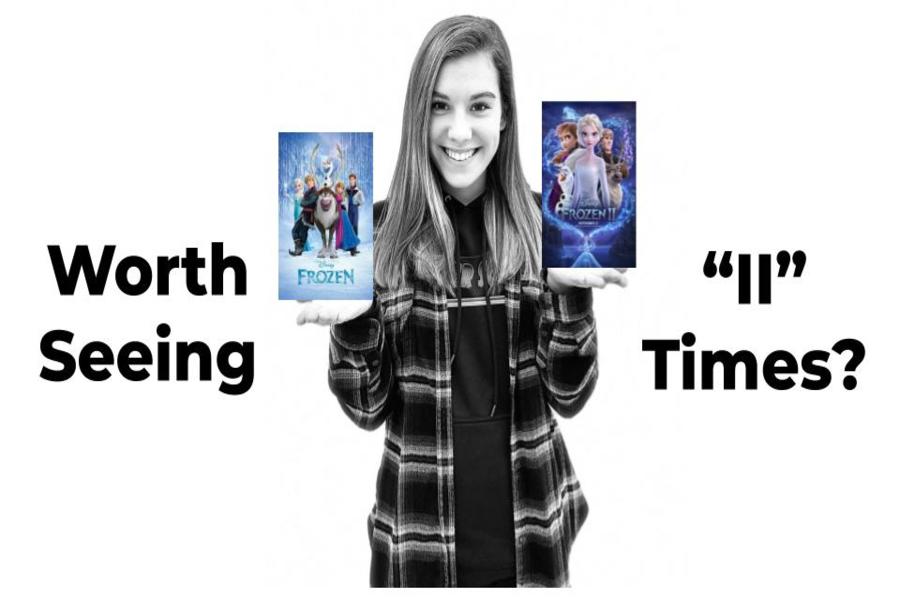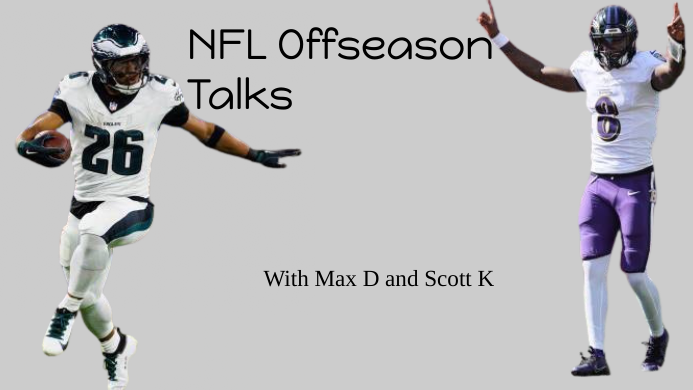“Frozen II:” Why it’s worth seeing two times
I saw “Frozen II” twice. DO you think it’s worth it?
December 16, 2019
WARNING: Contains spoilers
It definitely came as a surprise to many when the trailer for Frozen II broke the internet during March. The vague two-minute video of Elsa (Idina Menzel), attempting to control towering ocean waves using her powers did not spark a lot of excitement. In fact, it was quite confusing. Nine months later, the sequel made its debut in theaters. While it seemed difficult for Frozen II to top its blockbuster predecessor, the film’s action-packed plot and Broadway-worthy songs surprised movie goers, including me.
Unlike Frozen, Frozen II dives into the mysterious past of Anna (Kristen Bell) and Elsa’s parents. The king and queen in the first film suddenly die while traveling at sea. This film begins with Anna and Elsa as young children. There is a short five minute flashback featuring King Agnarr (Alfred Molina) tucking his two young daughters into bed as he tells them a story of the people of Arendelle’s conflict with the people of an enchanted forest when the king was a young boy. Young Elsa and Anna, curious to learn more, eventually fall asleep when serenaded by their mother, Queen Induna (Evan Rachel Wood,) with a lullaby about a mysterious river called Ahtohallan, filled with answers of the past.
The movie quickly jumps back into the present as the kingdom of Arendelle prepares for a fall feast. A paranoid Elsa continues to hear a voice that she feels is calling her. Despite trying to ignore the persistent calling, Elsa desperately pursues the voice, accidentally disturbing the four spirits of wind, fire, water and earth. The four spirits attack Arendelle and break the barrier between the Northuldra people, the tribe that occupies the enchanted forest, and the people of Arendelle.
Elsa, Anna, Kristoff (Jonathan Groff,) Olaf (Josh Gad,) and Sven (Jonathan Groff,) embark on a journey to the enchanted forest in order to save Arendelle and find the truth between Arendelle and the enchanted forest’s dark past. During their journey, each character experiences their own problems as Olaf doesn’t understand maturity; Kristoff experiences “trouble in paradise;” Anna worries for the safety of her loved ones; and Elsa attempts to find herself and her purpose.
While the plot of Frozen II is drastically different from the first, and may seem almost cheesy, I found that the plot deals with more realistic issues. Many teenagers, or young adults for that matter, have a hard time dealing with maturity, love, maintaining their relationships and finding a purpose in life, similar to the characters in Frozen II.
Of course, Elsa’s magical ice powers will always grab the attention of children, but I think that Frozen II is able to appeal to an older audience as well as its expected younger ones.
Frozen II maintains the intense, yet laughable mood that made Frozen so popular. Despite Arendelle nearly collapsing, Elsa and Olaf almost falling to the unexpected ways of Ahtohallan, and Anna close to giving up, the film still brought out a few tears of laughter. Olaf, by far the funniest character, sings his musical sequence “When I’m Older,” describing how the ways of the enchanted forest don’t make sense, but will when he grows and matures. “When I’m Older” is as funny as Olaf’s original musical debut in Frozen, “In Summer.”
“When I’m Older” isn’t the only hit song of the movie. Elsa’s “Into the Unknown” describes her longing to to know where the mysterious voice is coming from. While “Into the Unknown” may never be able to top the infamous “Let it Go,” “Into the Unknown,” closely resembles it, not only in its tone, but also the message it gives the audience about Elsa and her growing curiosity.
Disney also surprised me with the song “The Next Right Thing,” sung by Anna after she realizes she has lost Olaf and Elsa and does not know how to move on and fix problems without their guidance. The song revealed a very depressing side of the usually quirky character that is quite surprising and abrupt. While the young audience may not be able to interpret the more mature lyrics, Anna sounds close to suicide as she sang “Can there be a day, behind this night…” and “Hello darkness I’m ready to succumb…”
Kristoff, on the other hand, sang “Lost in the Woods,” as he describes how his current status with Anna is complicated, but reflects on his past and realizes he can’t live without her. Of course, Kristoff is accompanied by Sven and the other reindeer of the enchanted forest as “Reindeers Are Better Than People.”
Frozen II does not have a villain, or a Hans (Santino Fontana), that created the controversy in Frozen. Instead, Frozen II focuses on the developing truth about Elsa and Anna’s parents and the origin story of Elsa and her powers. The film also focuses on how the characters change and develop throughout the movie, as they create problems for themselves.
No matter how much you compare and contrast Frozen and “Frozen II,” the sequel unexpectedly exceeded my expectations. The intriguing plot, making it very unique and different compared to its predecessor, incorporation of maturer ideas and catchy, meaningful songs, made Frozen II definitely worth seeing two times.






